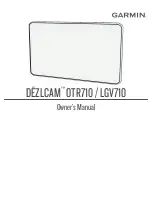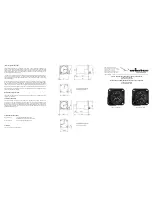
Receiver Commands
135
Receiver Commands
PMD:1
Current position mode setting for the minimum number of
satellites required to compute a position. With default value 1, a
minimum of 3 satellites are needed to compute a position. With
3 satellites, the altitude is fixed (2-D); with 4 or more, the altitude
is computed (3-D).
0 to 3
FIX
Current fixed altitude mode setting used when computing a 2-D
position or when there are not enough visible satellites to
compute a 3-D position. Mode 0 (default) Indicates that the
altitude value is either the most recently entered antenna
altitude ($PASHS,ALT) or the most recently computed altitude in
which the VDOP value is lower than the VDOP mask.
0, 1
ALT
Current altitude of the antenna position (meters). Default is
00000.00 meters.
-99999.99 to
+99999.99
PDP
Current PDOP (Position Dilution Of Precision) mask setting. The
receiver stops computing positions when the calculated PDOP
value exceeds the PDOP mask value. The default setting is 40.
00.0 to 99.9
HDP
Current HDOP (Horizontal Dilution Of Precision) mask setting.
The receiver stops computing positions when the calculated
HDOP value exceeds the HDOP mask value. Default is 04.
00.0 to 99.9
VDP
Current VDOP (Vertical Dilution Of Precision) mask setting. The
receiver stops computing positions when the calculated VDOP
value exceeds the VDOP mask value. Default is 04.
00.0 to 99.9
ERM
This setting indicates the mask values for horizontal and vertical
error in relation to the different positioning modes. The default is
OFF for both autonomous and differential modes which is
represented by 6000,6000,6000,6000.
1 to 6000
PEM
Current position elevation mask setting (degrees). The receiver
excludes any satellite from the position computation when its
elevation falls below the elevation mask setting. Default is 05.
0° to 90°
SEM
This field indicates the secondary elevation mask angle value for
a sector of the sky defined by two azimuth angles. The default is
OFF.
ON, OFF
UNH
This setting indicates whether the receiver uses (Y) or ignores
(N) unhealthy satellites. This setting is always N. The DG16
never uses unhealthy satellites in position computation.
N
ION
Indicates whether ionospheric modelling is enabled (Y) or
disabled (N) in position computation. Default is always Y when
the receiver is in differential mode and always Y in autonomous
mode.
Y, N
Table 6.32.
PAR Response Format (Continued)
Item
Description
Range
Summary of Contents for DG14
Page 12: ...xii DG16 Board Sensor Reference Manual...
Page 14: ...xiv G12 GPS OEM Board Sensor Reference Manual...
Page 48: ...28 DG14 and DG16 Board Sensor Reference Manual...
Page 72: ...52 DG14 and DG16 Board Sensor Reference Manual...
Page 202: ...182 DG14 and DG16 Board Sensor Reference Manual...
Page 344: ...324 DG14 and DG16 Board Sensor Reference Manual...
Page 374: ...354 DG14 and DG16 Board Sensor Reference Manual...
Page 389: ...369 Index W warm start 2 33 WGS 72 81 WGS 84 4 81 86 X XMG 284 XYZ 221 Z ZDA 285...
Page 390: ...370 DG14 and DG16 Board Sensor Reference Manual...















































